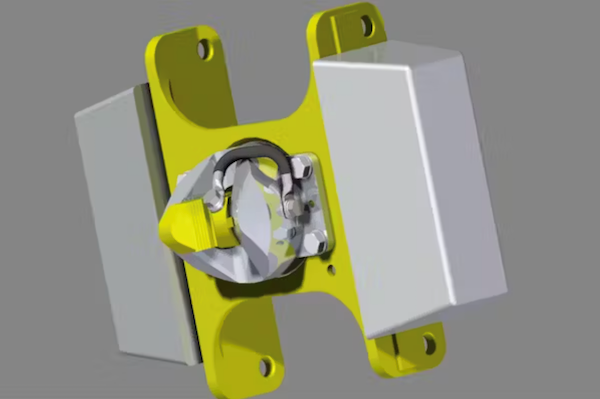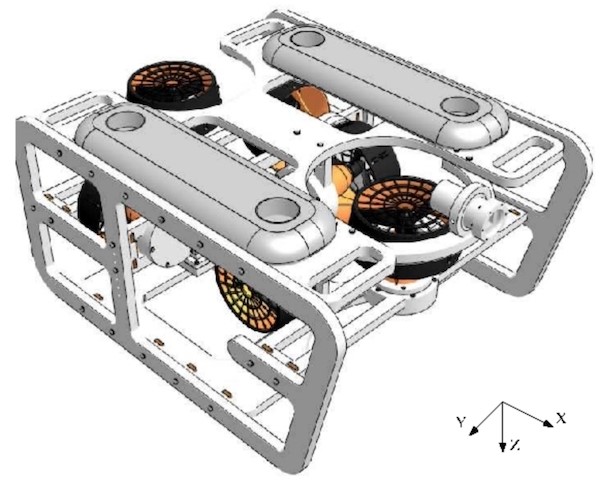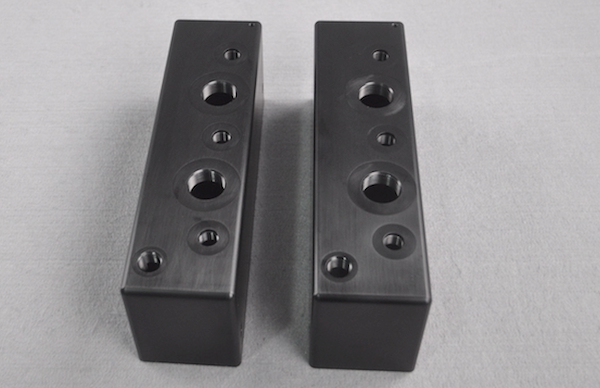The design and machining of remote operated vehicles (ROV) is a very complex process as the manufacturers need to optimize performance while keeping various facets of design, material selection, and functional integration.
As the basic purpose of ROV is to travel and explore underwater details, carbon fiber and titanium composites are commonly used to custom ROV components, as these materials provide excellent strength-to-weight ratio which is a pivotal aspect of buoyancy and maneuverability.
The hydrodynamic efficiency of the materials is the deciding factor as it determines the agility of the ROV machines under the waves. For that reason, various hydrophobic coatings and surface treatment procedure are also performed on the machines to minimize drag and optimize performance.
To achieve a high level of engineering precision one should be well aware of the equilibrium between structural integrity, material science, and design pragmatism to achieve optimal performance of these machines in harsh environments.
Designing Considerations for Elevating the ROV Performance
Designing ROV machinery is quite a complex task, as the machinery is manufactured according to the operating and environmental conditions. For that reason, most manufacturers opt to go for custom machines.
One of the basic parameters that can enhance their performance capability in these machines is hydrodynamic efficiency, the machines are designed such that they are exposed to minimum drag and enhance maneuverability. To refine this hydrodynamic design engineers, perform CFD and wind tunnel analyses with effective parameters of actors such as streamline flow, pressure distribution, and wake patterns. This will give a detailed structural and mobility performance of these machines.
Secondly, when these machines are operated in deep waters, these machines may become imbalanced and unstable. to overcome this issue engineers must focus on careful design of the vehicle’s buoyancy system, with a special focus on ballast and flotation elements. This will give more stability to the machines in harsh environments.
Another crucial factor while designing these ROVs is the payloads. Mostly when these machines are operated, an additional weight of cameras, tools, or some other accessories are attached to them. This will disturb the overall weight ratio and affect their stability. For that reason, the designers should keep that in mind and design these machines accordingly such that they can pick up excessive loads.
Right Integration of Advanced Materials and Composites
The utilization of advanced materials in custom ROV components not only defines their structural integrity, but also enhances the ROV’s durability, longevity, and efficiency in demanding underwater operations. Before deciding on any material one should meticulously analyze material properties like tensile strength, fatigue resistance, and corrosion susceptibility.
As in these machines, operating condition strength to weight ratio along with corrosion resistance are the main paramount’s. in this regard aluminum is commonly used, aluminum is a lightweight metal that provides excellent strength-to-weight ratio and durability without affecting their agility.
With aluminum the right integration is titanium and carbon fiber alloys, titanium is corrosion corrosion-resistant element and they both are lightweight, and these materials are used in many critical components of the machines that are exposed to aggressive marine environments. This unique combination of strength and low-weight materials is ideal for structural elements that demand both robustness and buoyancy.
Machining complex ROV parts necessitates 5-axis machinery for the precision and tight tolerance that these machines demand. The aforementioned materials are easy to machine and random precise machining techniques like milling, grinding, and boring operations are performed on them as needed, while maintaining the structural integrity and corrosion-resistive properties of the materials.
Choosing the Right Surface Finish for Hydrodynamic Efficiency
Choosing the right coating in the machining of remote operated vehicles will increase the strength, durability, and hydrodynamic efficiency of the ROV machines. The engineer should consider all the possible coating options based on sound material science properties to enhance their product performance.
Smooth Coatings and Low-Friction Finishes
Smooth coatings and polished surfaces reduce the friction implemented on the body of the ROV’s machines. This coating helps in reducing the overall drag force and increases the hydrodynamic efficiency of the machines. Epoxy or polyurethane paint coating reduces the turbulent flow and the drag force on the body as the ROV moves through the waves. A fine-tuning of these waves will have a massive impact on the performance of the machines.
Most engineers do CFD simulation and analysis of these coatings so that they can have a fine-tuning of these coatings. The drag coefficient is a critical parameter of the hydrodynamic efficiency and bouncy of the machines. CFD analysis enables engineers and designers to analyze the impact of different coatings on drag forces so that they can decide on one that minimizes resistance and enhances overall performance.
Anti-Fouling Coatings
During the motion of ROVs in the deep water, Barnacles, algae, and other marine organisms are attracted to it. these organisms attach to the surface of these machines disturb the overall weight ratio and ultimately affect its hydrodynamic performance.
To prevent this issue Copper-based or silicone-based anti-fouling paint coatings are used in the machining of remotely operated vehicles. These coatings create an inhospitable environment for these organisms so that they move away from their path and preserve the smooth surface optimizing its hydrodynamic profile.
Durability and Longevity
When the machines are under harsh environmental conditions or in deep water for a specific period, then there is a possibility that the arts may get rusted and damaged. For those reasons, deep underwater environments demand coatings that can withstand corrosion, abrasion, and constant exposure to saltwater. The selection of robust materials like carbon fiber composites, and titanium can ensure that the surface finish maintains its integrity over time. This combination of materials improves the ROV’s structural integrity, durability, strength, and lifecycle.
Implement the Right Thermal Management
As the temperature and pressure in the deep sea varies drastically. For that reason, a meticulous approach to prevent overheating is very important for smooth operations of electrical components. Heat dissipation strategies are very important and paramount for the continued functionality and longevity of the vehicle.
Firstly, heat-generated components like motors, electronics, and power systems must be equipped with fan systems so that no heat gets trapped. Material science is also impactful in its, use of materials like aluminum and copper which are excellent heat conductors, they facilitate heat transfer away from sensitive components.
Secondly, the insulation material should be chosen wisely in the machining of remotely operated vehicles. Thermal insulation acts as a barrier to external temperature fluctuations and maintains the internal environment of environment of the body. These techniques save electronic products from extreme weather variations.
Conclusion
Designing conditions for remotely operated vehicles need some paramount’s to be addressed. Engineers and designers should be well aware of all the considerations, of design, material science, and surface treatment for manufacturing a durable machine. However, the environmental conditions if we talk more specifically understanding working boundaries is the key to an adorable design. Summing things up, consulting an expert machine shop with the necessary machinery and experience is the key.










